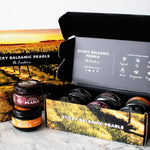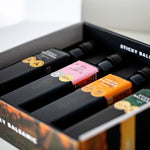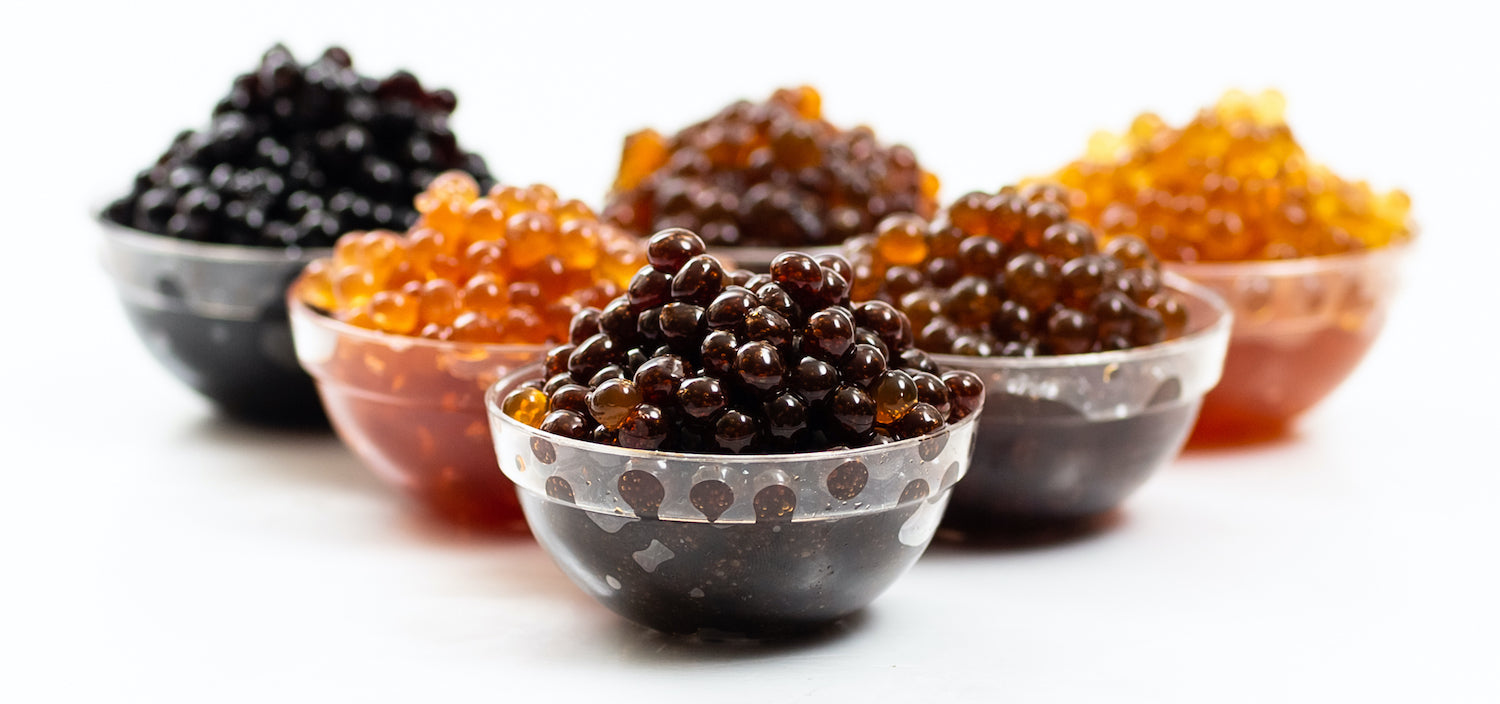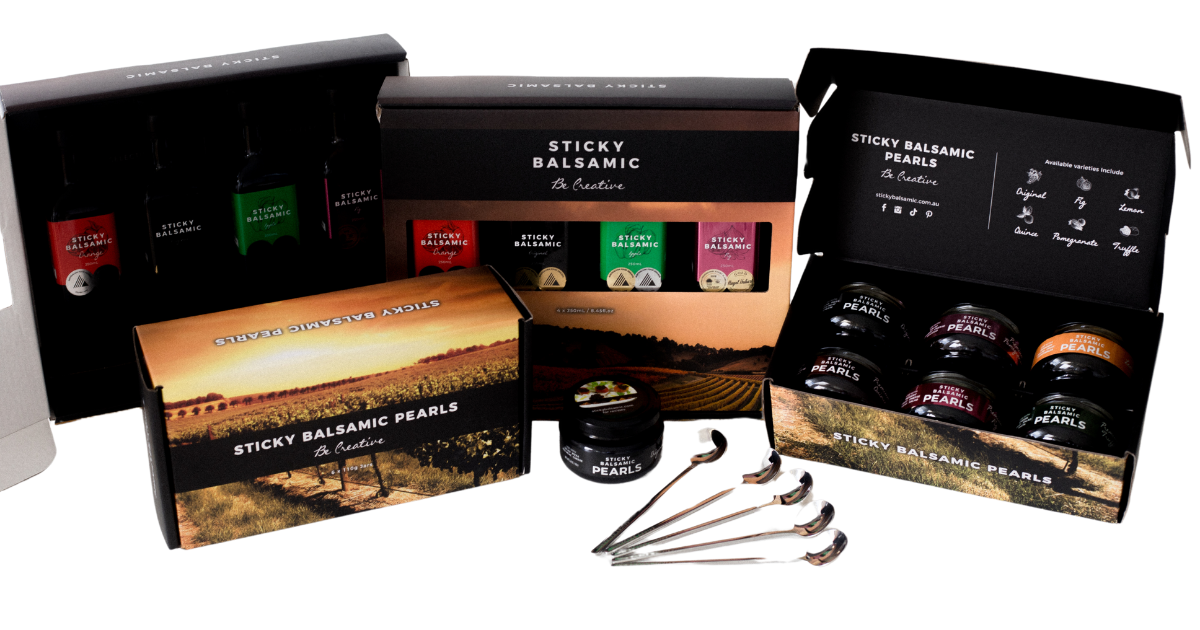I used to think balsamic vinegar was just that fancy bottle sitting in my pantry, reserved for special occasions. You know, the one you pull out when you're trying to impress dinner guests or make a salad feel a bit more sophisticated.
Turns out, I was massively underutilizing one of the most versatile ingredients in my kitchen.
What Actually Is Balsamic Vinegar?
Let's clear up some confusion right off the bat. Real balsamic vinegar comes from Italy—specifically the Modena or Reggio Emilia regions. It's made from grape must (that's freshly crushed grape juice, complete with skins, seeds, and stems) that's been cooked down and then aged in wooden barrels.
The aging process is where the magic happens. As the vinegar sits in those barrels, it develops that distinctive sweet-tart flavour and syrupy consistency we all love. Traditional balsamic can be aged anywhere from 12 to 25 years or more.
But here's the thing: not all balsamic vinegar is created equal, and understanding the differences will completely change how you shop and cook.
The Different Types of Balsamic Vinegar
This is where it gets interesting. There are basically three categories you'll encounter:
Traditional Balsamic Vinegar is the real deal. It's expensive, aged for at least 12 years, and honestly tastes like liquid gold. You'll find it in small bottles, and yes, it costs a fortune. This is the stuff you drizzle sparingly over strawberries or aged parmesan.
Balsamic Vinegar is what most of us use daily. It's a blend of grape must and wine vinegar, aged for a shorter period. It's affordable, widely available, and perfect for everyday cooking. This is your workhorse balsamic.
Balsamic Glaze is balsamic vinegar that's been reduced with sweeteners to create a thick, syrupy consistency. It's great for drizzling and presentation, though purists will tell you it's not "real" balsamic.
For most home cooking, a quality Balsamic Vinegar is exactly what you need. Save the traditional stuff for special moments when you really want to taste the complexity.
Why Balsamic Vinegar Belongs in Every Kitchen
I'm not exaggerating when I say balsamic vinegar is one of the most useful ingredients you can own. It's not just for salads—though it's brilliant there too.
It balances flavours. That sweet-tart profile cuts through rich, fatty foods and brightens up dishes that taste flat. A splash of balsamic can rescue an over-salted sauce or add depth to something that's missing that certain something.
It's incredibly versatile. You can use it in dressings, marinades, reductions, glazes, and even cocktails. It works with vegetables, meat, seafood, cheese, and fruit. Try finding another ingredient with that kind of range.
It makes you look like a better cook. Seriously. A drizzle of balsamic vinegar over roasted vegetables or grilled chicken instantly elevates a simple dish. It's the easiest way to add restaurant-quality finish to home cooking.
How to Use Balsamic Vinegar (Beyond Salad)
Let's talk about all the ways you can put that bottle to work.
In Salad Dressings
This is the obvious one, but it's worth doing right. Use it by itself! Balsamic vinegar is perfect being used by itself! Try it - you'll be pleasantly surprised how much a single ingredient can do. If you want to make a balsamic and oil dressing, then simply mix balsamic vinegar with good olive oil, a touch of Dijon mustard, salt, and pepper. That's it. You've got a dressing that works on basically any salad.
The ratio I use is roughly three parts oil to one part balsamic, but adjust based on how acidic you like things (more balsamic for more acidity).
As a Marinade
Balsamic vinegar is brilliant for marinating meat and vegetables. The acidity helps tenderize while adding flavour. Mix it with olive oil, garlic, and herbs, then let your protein sit in it for a few hours before cooking.
It works particularly well with chicken, pork, and mushrooms.
For Roasting Vegetables
Toss vegetables in olive oil and balsamic before roasting. The vinegar caramelizes in the oven, creating these sweet, tangy, slightly charred edges that are absolutely addictive.
Brussels sprouts, carrots, beetroot, and pumpkin all love this treatment.
In Reductions
Simmer balsamic vinegar in a pan until it reduces by half and becomes syrupy. This concentrated version is perfect for drizzling over steaks, salads, or even ice cream.
Watch it carefully though—it can go from perfect to burnt quickly and can provide an interesting aroma! Do this with your windows wide open!
With Fruit
This might sound weird if you've never tried it, but balsamic vinegar and fruit are a match made in heaven. Drizzle it over strawberries, grilled peaches, or fresh figs. The acidity enhances the fruit's natural sweetness.
Add a dollop of cream or mascarpone, and you've got an impressive dessert with minimal effort.
In Sauces and Glazes
Add a splash of balsamic to tomato-based sauces for depth. Use it to deglaze a pan after searing meat. Mix it with honey for a quick glaze. The possibilities are genuinely endless.
Choosing Quality Balsamic Vinegar
Walk down the vinegar aisle at any supermarket, and you'll see prices ranging from a few dollars to hundreds. How do you know what's worth buying?
Check the ingredients list. If you see, thickeners or a bunch of additives, it's probably not great quality.
Look at the consistency. A good balsamic vinegar is thicker and more syrupy than a standard vinegar. If it's as thin as regular vinegar, it's likely been diluted. A little thicker and go by its taste - this is the best way to see if it is diluted or not.
Consider the price. You don't need to spend a fortune, but if it's suspiciously cheap, there's probably a reason. A mid-range bottle will serve you well for everyday cooking.
Try before committing. If possible, taste it. Quality balsamic should be complex—sweet, tart, and slightly syrupy—not just sour.
Storing Balsamic Vinegar
Good news: balsamic vinegar is incredibly low-maintenance. Store it at room temperature in a cool, dark place—your pantry is perfect. Keep the cap tightly sealed to prevent oxidation.
It doesn't need refrigeration, and it has a seriously long shelf life. We're talking three years or more. The vinegar might develop sediment over time, which is completely normal and doesn't affect quality.
Just give it a shake before using if you notice any settling.
Common Balsamic Vinegar Mistakes
I've made all of these mistakes, so learn from my errors.
Using too much. Balsamic vinegar is potent. Start with less than you think you need—you can always add more, but you can't take it away.
Cooking it at high heat for too long. While balsamic can handle heat, prolonged high temperatures can make it bitter. Add it toward the end of cooking or use it in reductions where you control the process.
Buying the cheapest bottle. I get it, we all love a bargain. But with balsamic vinegar, quality matters. A more expensive bottle will taste significantly better and last longer because you'll use less which usually results in a more economical purchase.
Not experimenting. If you're only using balsamic vinegar on salads, you're missing out. Try it in unexpected places. You'll be surprised how often it improves a dish.
Flavoured Balsamic Vinegars
Once you're comfortable with traditional balsamic, flavoured varieties open up even more possibilities. Lemon balsamic is brilliant with fish and seafood. Fig balsamic pairs beautifully with cheese. Pear balsamic adds complexity to roasted meats.
These aren't gimmicks—they're genuinely useful for adding specific flavour profiles without needing multiple ingredients.
Just make sure you're buying quality flavoured balsamic made with real ingredients, not artificial flavourings.
The Health Side of Things
As a bonus, balsamic vinegar isn't just delicious—it's actually pretty good for you. It's low in calories, contains antioxidants, and may help with digestion and blood sugar regulation.
Obviously, don't start chugging it for health benefits, but it's nice to know that something that tastes this good isn't terrible for you.
Getting Creative with Balsamic Vinegar
Once you start keeping balsamic vinegar in regular rotation, you'll find yourself reaching for it constantly. It becomes one of those ingredients that solves problems you didn't know you had.
Soup tastes flat? Add a splash of balsamic. Grilled cheese needs something? Drizzle balsamic on the plate. Cocktail needs depth? A few drops of balsamic can add complexity.
The key is tasting as you go and trusting your instincts. There's no wrong way to use it, really—just different levels of delicious.
The Bottom Line
Balsamic vinegar is one of those ingredients that punches way above its weight. It's affordable, versatile, long-lasting, and capable of transforming ordinary dishes into something special.
You don't need to be a chef to use it well. You don't need fancy recipes or complicated techniques. You just need a decent bottle and a willingness to experiment.
Start simple—a salad dressing, some roasted vegetables, a drizzle over fresh mozzarella. Pay attention to what it does to those dishes. Then start getting creative.
Your cooking will be better for it, I promise.









